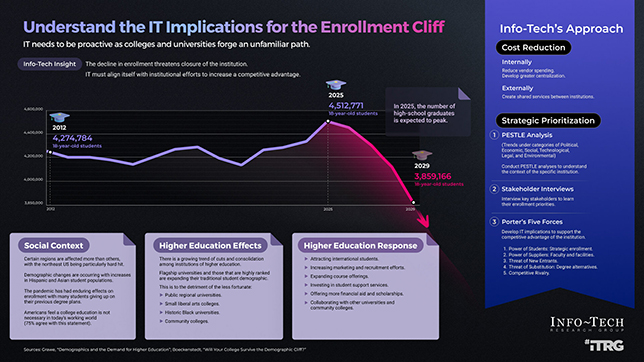
With institutions of higher education experience enrollment declines — and steeper drops projected over the next few years — IT departments must align their efforts with their institutions’ strategies for addressing the downturns, according to a new brief from advisors at Info-Tech Research Group.

A new network of research teams, led by the Community College Research Center (CCRC) in partnership with the National Student Clearinghouse Research Center and the University of California, Davis Wheelhouse Center for Community College Leadership and Research, is embarking on a three-year project to study ways to combat community college enrollment drops and learning loss due to the COVID-19 pandemic.
A new partnership between the Grand Valley State University NextEd Co-Lab and Littera Education will provide every K–12 school district in Michigan with access to research-based, high-impact tutoring.
According to nonprofit ECMC Group’s latest Question The Quo Education Pulse survey of 14- to 18-year-olds, high-schoolers are paying attention to the career landscape and workforce shortages, and they’re looking for the fastest, least expensive route to careers in high-demand fields.

In this free, one-day event, education and IT leaders will offer ideas and best practices based on expertise and research in the field, to help inform your digital transformation strategy.

A new project out of Oregon State University is calling for submissions from college students, faculty and staff about how they've coped with the psychological impacts of the COVID-19 pandemic.

In this free, one-day event, education and IT leaders will offer practical insights and advice to help your institution navigate the many facets of digital transformation.

A new book shares new students' reflections on college during COVID.

IT leaders, faculty and a student offer a variety of perspectives on the future for their campuses in the new year.
The Michigan Association of State Universities, representing the state's 15 public universities, has announced a partnership with Uwill, a teletherapy solution specifically designed for students, to provide on-demand counseling services to the 270,000 students enrolled at its member institutions.